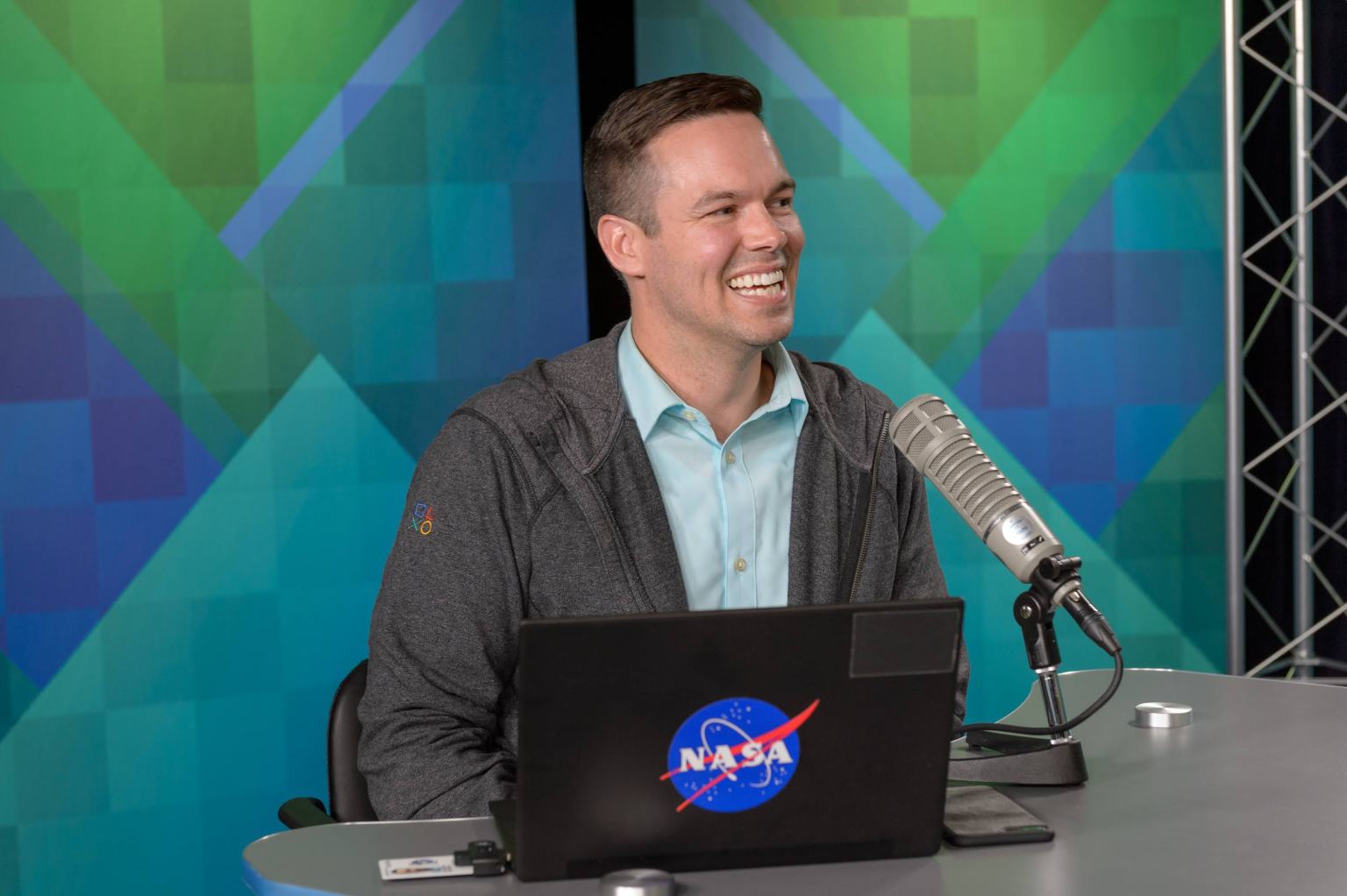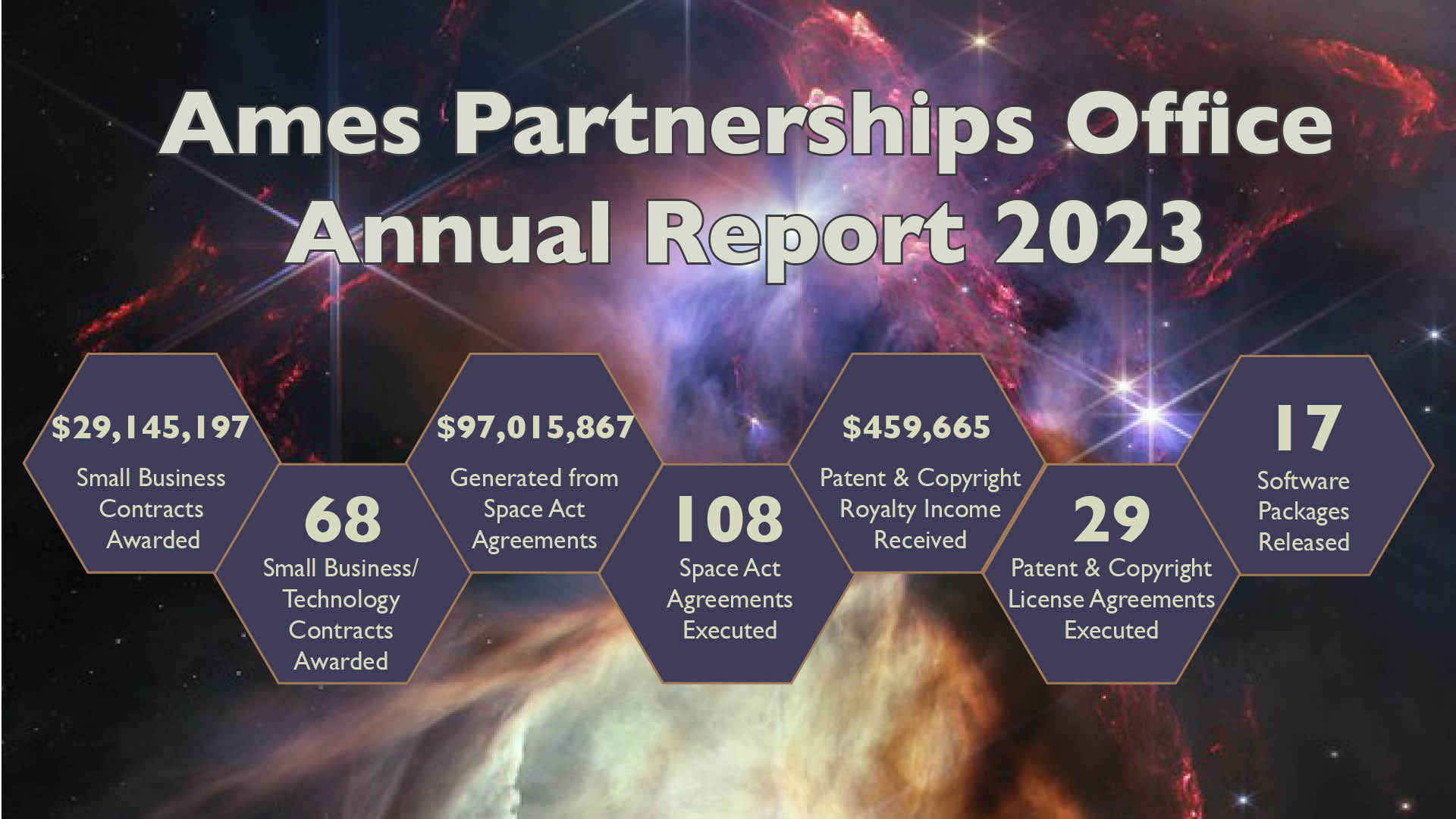SBIR/STTR Funding
Mango Materials
SBIR/STTR secured $6 million in CRRP funding for this project!
A woman-owned small business based in San Francisco, California, are adapting a bioreactor system to convert methane into bioplastic from biodegradable material. On earth, we can convert methane into environmentally conscious biopolymers as an alternative to plastic fibers like polyester. In space, we can use waste methane on the International Space Station or atmospheric methane on Mars to 3D print objects and provide polymers for construction.
Learn More about NASA's work with Mango Materials about Mango Materials
SBIR/STTR Funding
NASA's Starling
Testing technologies for the future CubeSat swarms
NASA’s Starling mission is advancing the readiness of various technologies for cooperative groups of spacecraft – also known as distributed missions, clusters, or swarms. Starling will demonstrate technologies to enable multipoint science data collection by several small spacecraft flying in swarms. The Starling mission will test whether the technologies work as expected, what their limitations are, and what developments are still needed for CubeSat swarms to be successful. Blue Canyon Technologies is designing and manufacturing the spacecraft buses and providing mission operations support. Emergent Space Technologies is providing the cluster flight application software for ROMEO. CesiumAstro is providing the crosslink radios and antennas for the MANET experiment. Lastly, Rocket Lab USA is providing launch and integration services!
Learn More about the Starling Mission about NASA's Starling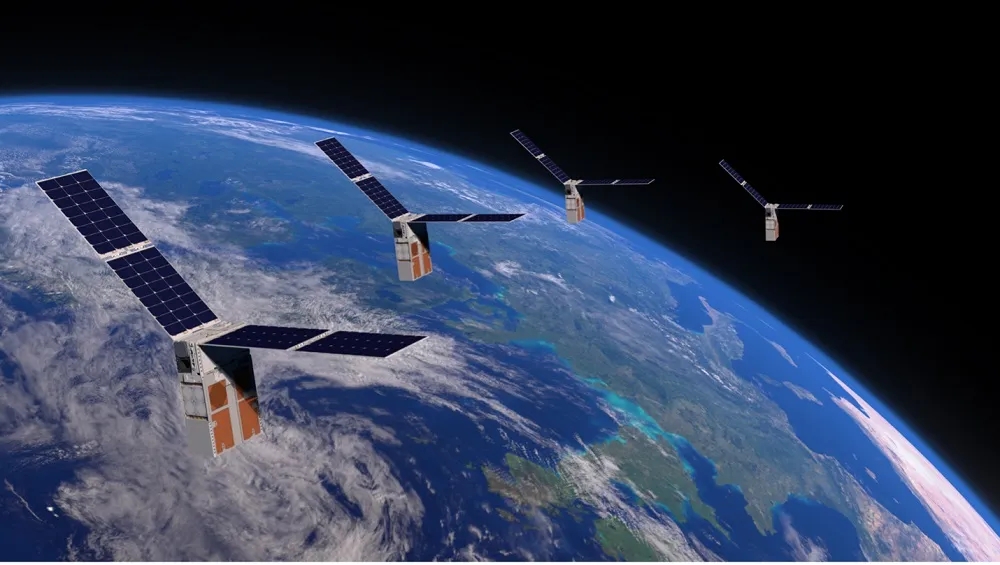
Space Act Agreement
Data and Reasoning Fabric (DRF)
DRF is enabling the full potential of future air mobility!
Autonomy Association International supported the research and development of a Data and Reasoning Fabric (DRF) prototype for future air mobility. DRF designs technology to help autonomous airborne activities safely meet their full potential for society’s benefit. Its intent is to form a connected, interwoven “fabric” of intelligence that sends aircraft specific, tailored information, wherever they are.
Learn More about DRF about Data and Reasoning Fabric (DRF)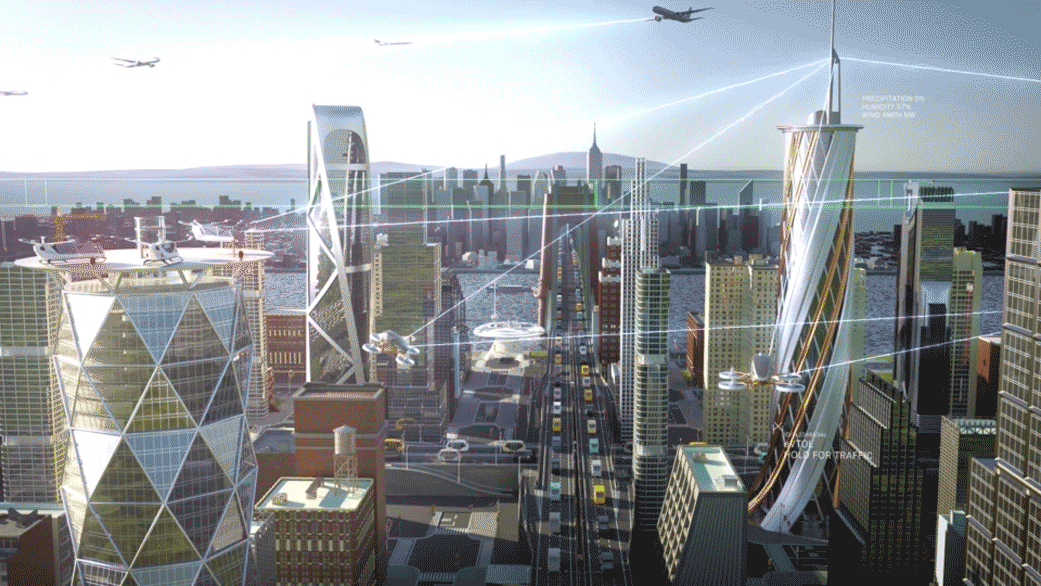
Interagency Agreement
4D Bio3 On-Demand Blood Program
Department of Defense “On Demand Blood” Project May Provide Blood Transfusion Capability to Support NASA Deep Space Exploration!
Human missions to distant destinations in our solar system will expose astronauts to a wider range of medical risks then they currently face on the International Space Station, including the possibility of acute or chronic blood loss. The goal of the project is to provide safe, transfusable blood for military personnel who serve in austere environments, where blood from blood banks may not be readily available. Dr. David Loftus, a physician-scientist and technology developer at Ames Research Center, is the NASA lead for the partnership. Dr. Loftus’ helps to support the military goals for the project and hopes to use the technology to support medical needs for astronauts on future deep space missions.
Learn More about 4D Bio3 about 4D Bio3 On-Demand Blood Program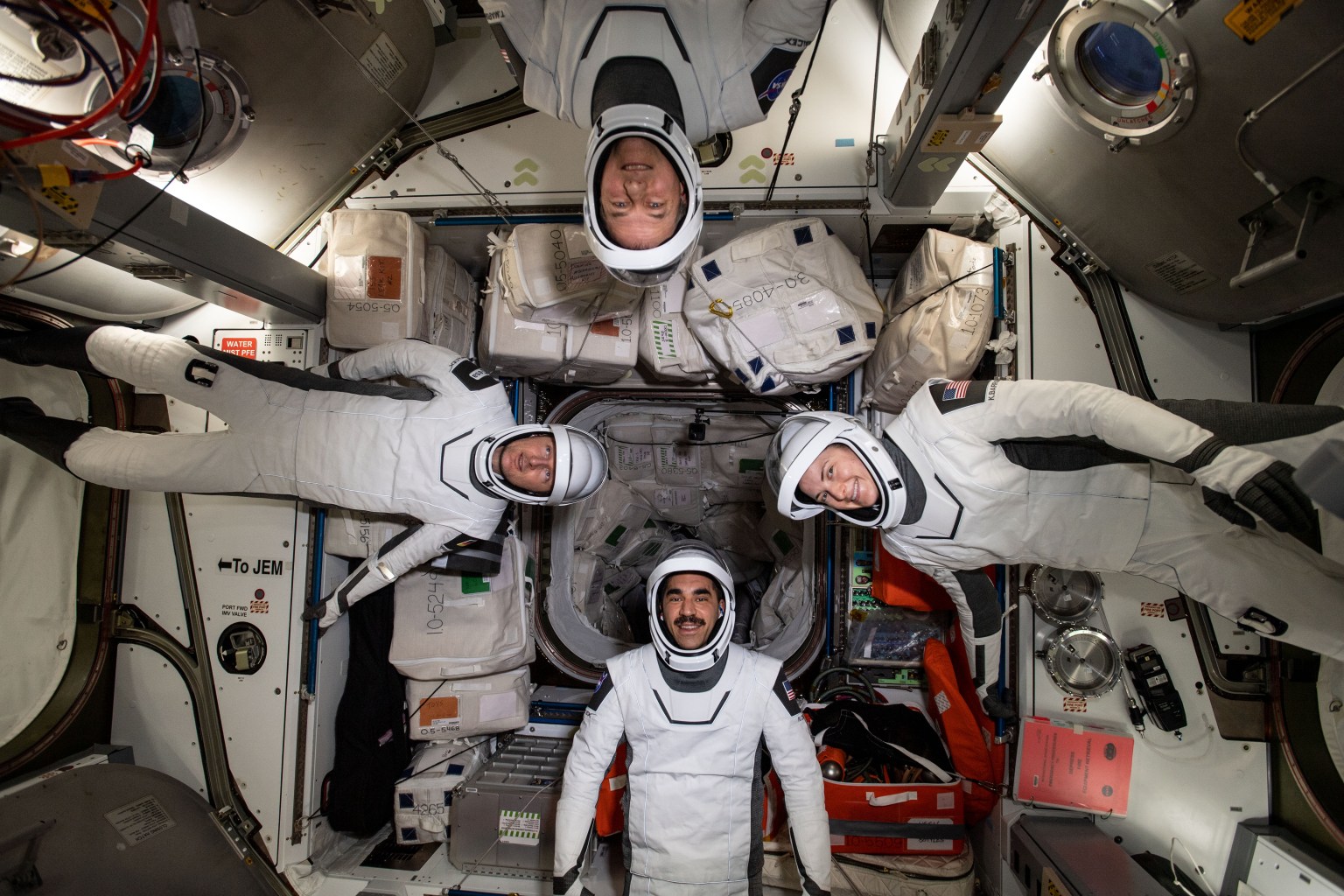
SBIR/STTR Funding
Cislunar Autonomous Positioning System Technology Operations and Navigation Experiment (CAPSTONE)
The Small Businesses Behind CAPSTONE Are Paving Our Path to the Moon!
CAPSTONE is a mission owned and operated by Advanced Space, LLC and is made possible by collaborations with small businesses across the country, showing how NASA works with innovators in its future exploration endeavors. Advanced Space Developed the Cislunar Autonomous Positioning System (CAPS) software supported by a NASA SBIR Phase III contract funded by the Small Spacecraft Technology Program. Tyvek Nano-Satellite Systems, Inc. designed and built the small satellite, or CubeSat, being used for the CAPSTONE mission. Stellar Exploration, Inc. Developed and built the propulsion system•Tethers Unlimited, Inc. Provided the radio systemsgOrion Space Solutions (OSS): Provided the Chip Scale Atomic Clock (CSAC) hardwareRocket Lab USA, Inc.Using their launch complex in New Zealand
Learn More about CAPSTONE about Cislunar Autonomous Positioning System Technology Operations and Navigation Experiment (CAPSTONE)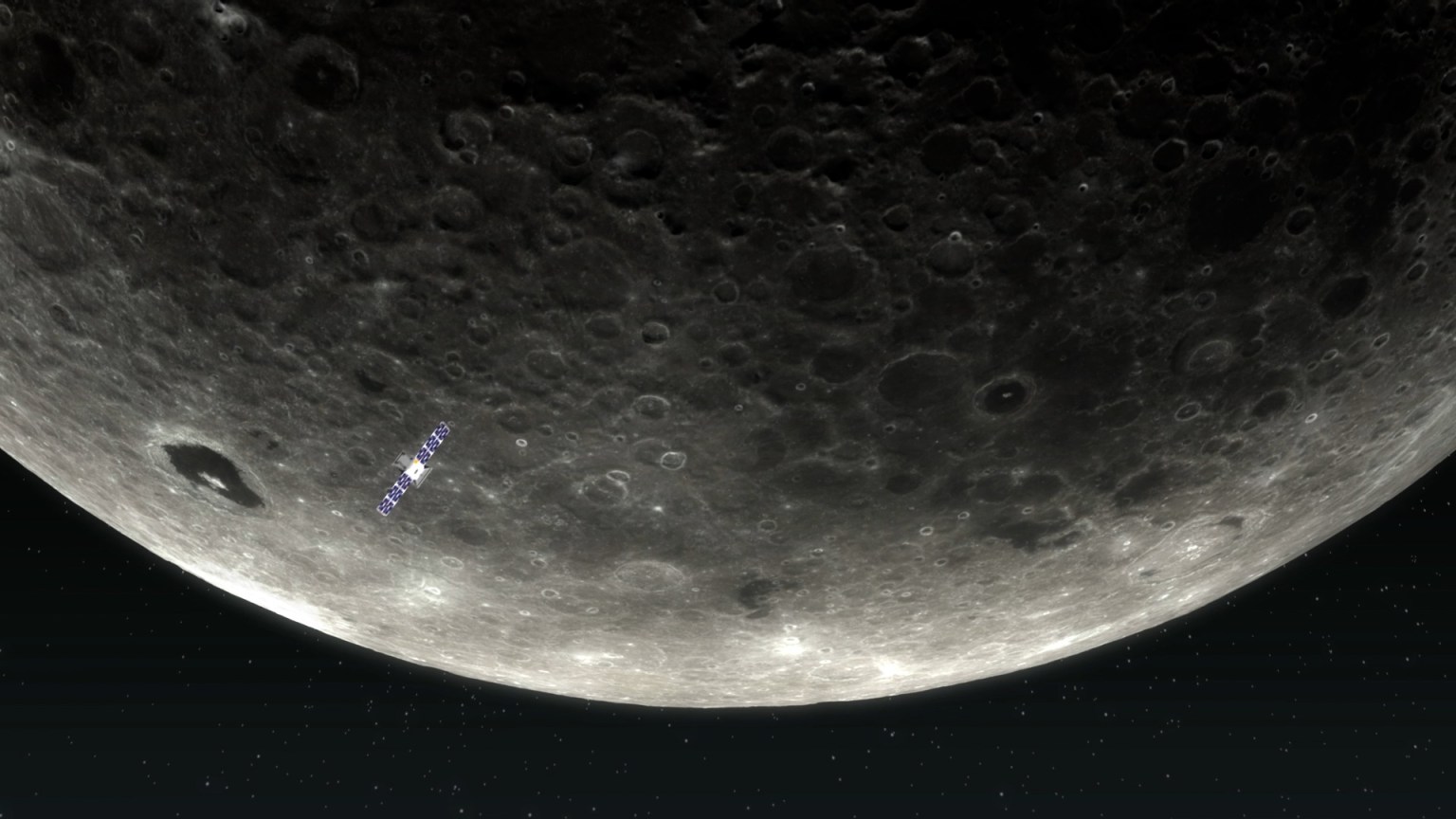
International Agreement
Human Factors Monitoring Program
Studying cabin-crew fatigue and documenting performance decreases associated with fatigue!
NASA and easyJet Airline Company of the UK entered into a collaborative agreement for research regarding simulation, information processing, and computational modeling of aviation safety that will help to assess and refine techniques for the analysis of aircraft and human performance data, automate the analyses of flight safety data, and merge data into a demonstration dashboard for in-time safety assessments. These results are expected to lead to an improved understanding of what factors influence flight crew performance and how flight crew performance changes relate to aircraft performance.
Learn More about the Human Factors Monitoring Program about Human Factors Monitoring Program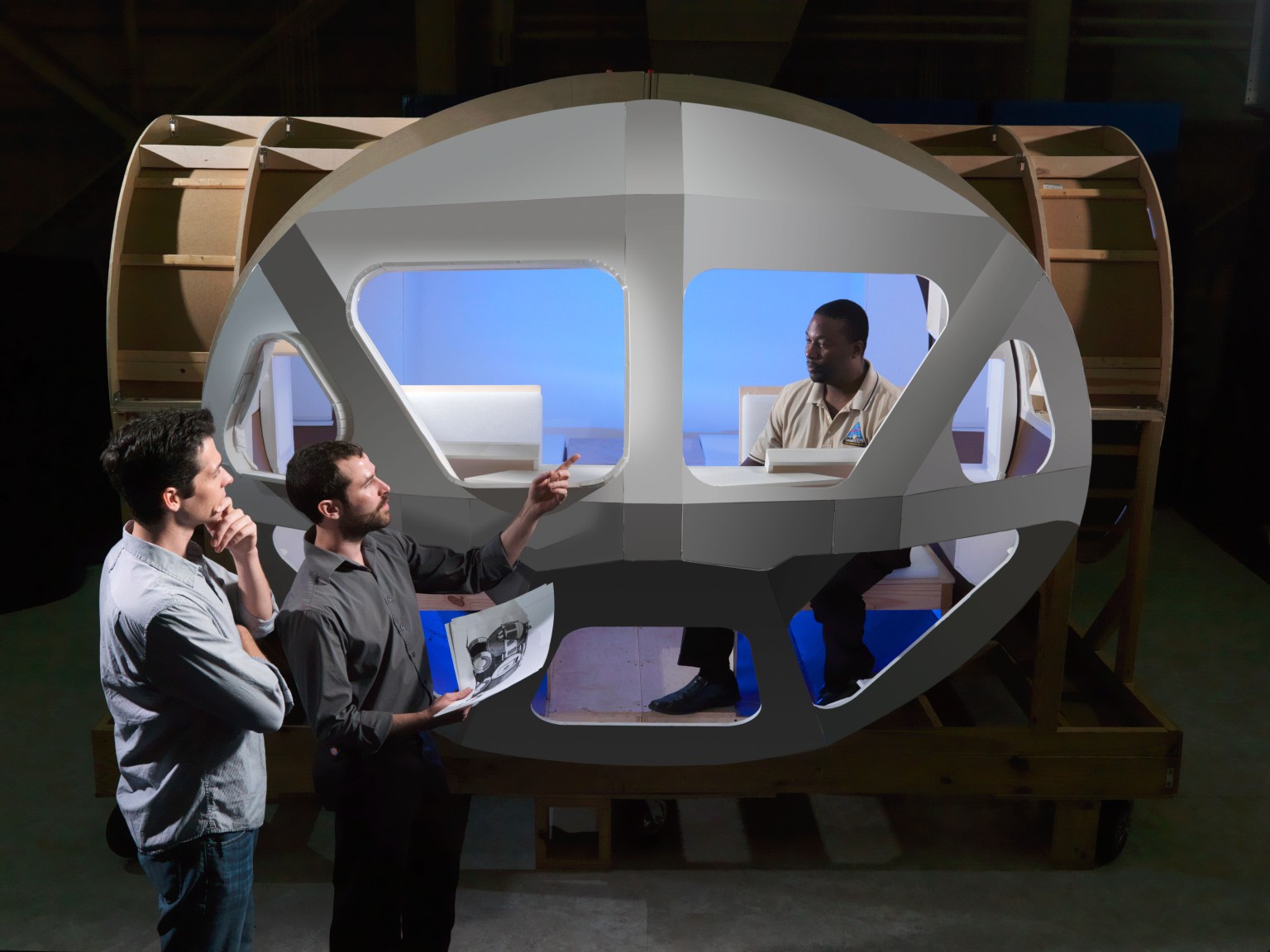
Technology Transfer
Unsteady Pressure-Sensitive Paint (uPSP) Data Processing Software
2023 Honorable Mention for Software of the Year
The uPSP software is a collection of applications developed to process raw data from unsteady pressure-sensitive paint (uPSP) data acquisition systems. The applications implement a set of processing steps that receive high-speed camera video files, wind tunnel flow condition data, and pressure-sensitive paint calibration data, and produce spatially-dense time histories of surface pressure on a three-dimensional model of the wind tunnel test subject. Developed during a series of NASA’s Space Launch System (SLS) buffet and aeroacoustic wind tunnel tests at NASA Ames Research Center’s Unitary Plan Wind Tunnel, the uPSP technology is capable of acquiring fluctuating pressures up to 20 kHz with continuous spatial resolution which enables direct calculation of unsteady loads. During test campaigns, a direct connection was established between the Unitary Plan Wind Tunnel and the NASA Advanced Supercomputer, both located at Ames. The rapid transfer, processing, and display of high-speed PSP data from the wind tunnel demonstrated the ability power of experiment-in-the-loop testing enabling informed, real-time decisions, decrease design cycle time, and securely share the data with subject matter experts while the test campaign is active.
Learn More about uPSP about Unsteady Pressure-Sensitive Paint (uPSP) Data Processing Software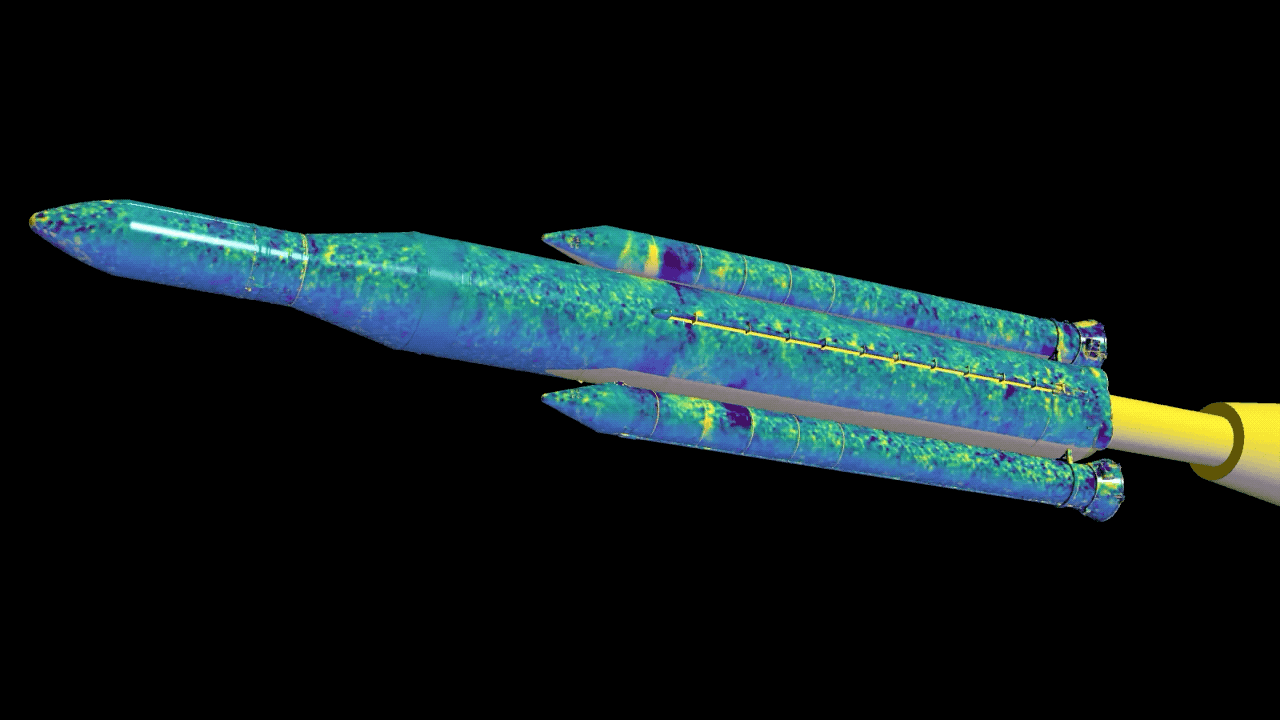
Technology Transfer
3-Dimensional Multifunctional Ablative (3D-MAT) Thermal Protection System
Winner of the 2023 NASA Government Invention of the Year Award.
3D-MAT is a 3-dimensional woven quartz fiber/cyanate ester composite that has a unique architecture, composition, and combination of properties that make it superior to any other material where extremely high strength and thermal stability plus insulation are required. This technology solved the Orion Multi-Purpose Crew Vehicle (MPCV) compression pad problem and enabled the heat shield design to meet the requirements of lunar and deep space missions. 3D-MAT became an enabling technology for Artemis missions and a crucial part of the Orion thermal protection system; without 3D-MAT, Orion could not fly the Artemis missions to the Moon and Gateway as there is no other known material that meets the requirements. Every human-rated mission/vehicle for exploration beyond low Earth orbit is using 3D-MAT. Furthermore, the manufacturing processes developed with 3D-MAT are enabling a wide new array of products in aerospace, defense, and performance racecars.
Learn More the 3D-MAT about 3-Dimensional Multifunctional Ablative (3D-MAT) Thermal Protection System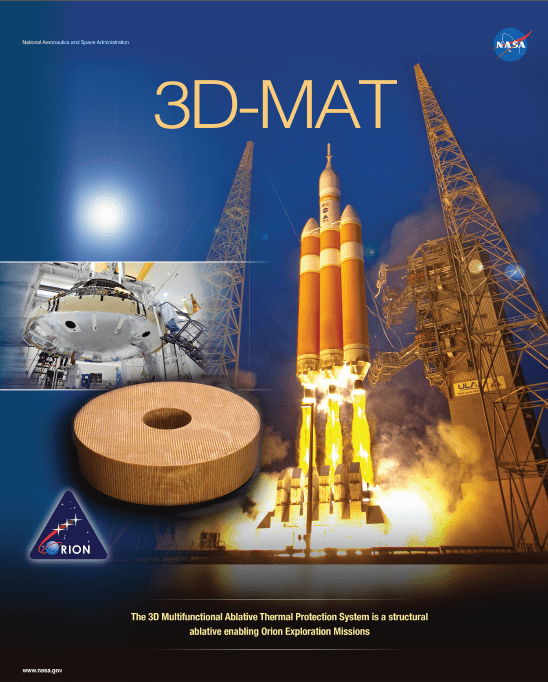
Space Act Agreement
Electric Vertical Takeoff and Landing Vehicles (eVTOL) Vehicles
Partnership on eVTOL vehicles are making air taxis a reality!
New air traffic simulations developed by NASA Ames Research Center and Joby Aviation are getting us closer to integrating air taxis and other electric vertical takeoff and landing (eVTOL) vehicles. These zero-operating-emission aircraft use electric power to take off, cruise, and land, and provide an appealing option for commercial industry interested in more sustainable transportation.
Learn More about eVTOL Vehicles about Electric Vertical Takeoff and Landing Vehicles (eVTOL) Vehicles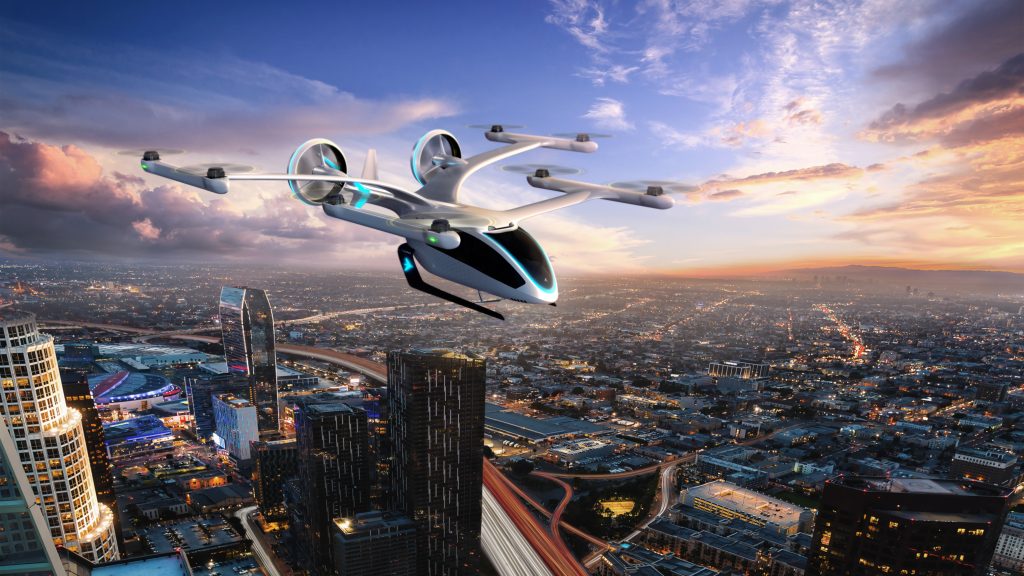
International Agreement
Giant Planet Missions
We're observing the ever-changing environments of our solar system's giant planets and their moons!
Saturn, Uranus, and Neptune are high priority destinations for NASA to investigate in the 2030’s decade. Probe carrying scientific instrument will need to enter the planetary atmospheres at very high speed, resulting in heating during entry. To design the probe to safely enter the atmosphere, accurate prediction of heating requires fundamental understanding of the aerothermodynamics, the study of the atmospheric gases under high pressure and temperature through entry. This planned collaboration between NASA and ESA allows us to perform relevant tests in specialized test facilities, both in US and in Europe, and compare the results and develop fundamental understanding that will allow us to improve our ability to predict the entry heating. The goal is to obtain ground truth to help us understand aerothermodynamic heating during entry into Outer Planets so we can help design future probe missions into Saturn, Uranus and Neptune with confidence
Learn More the Giant Planet Mission about Giant Planet Missions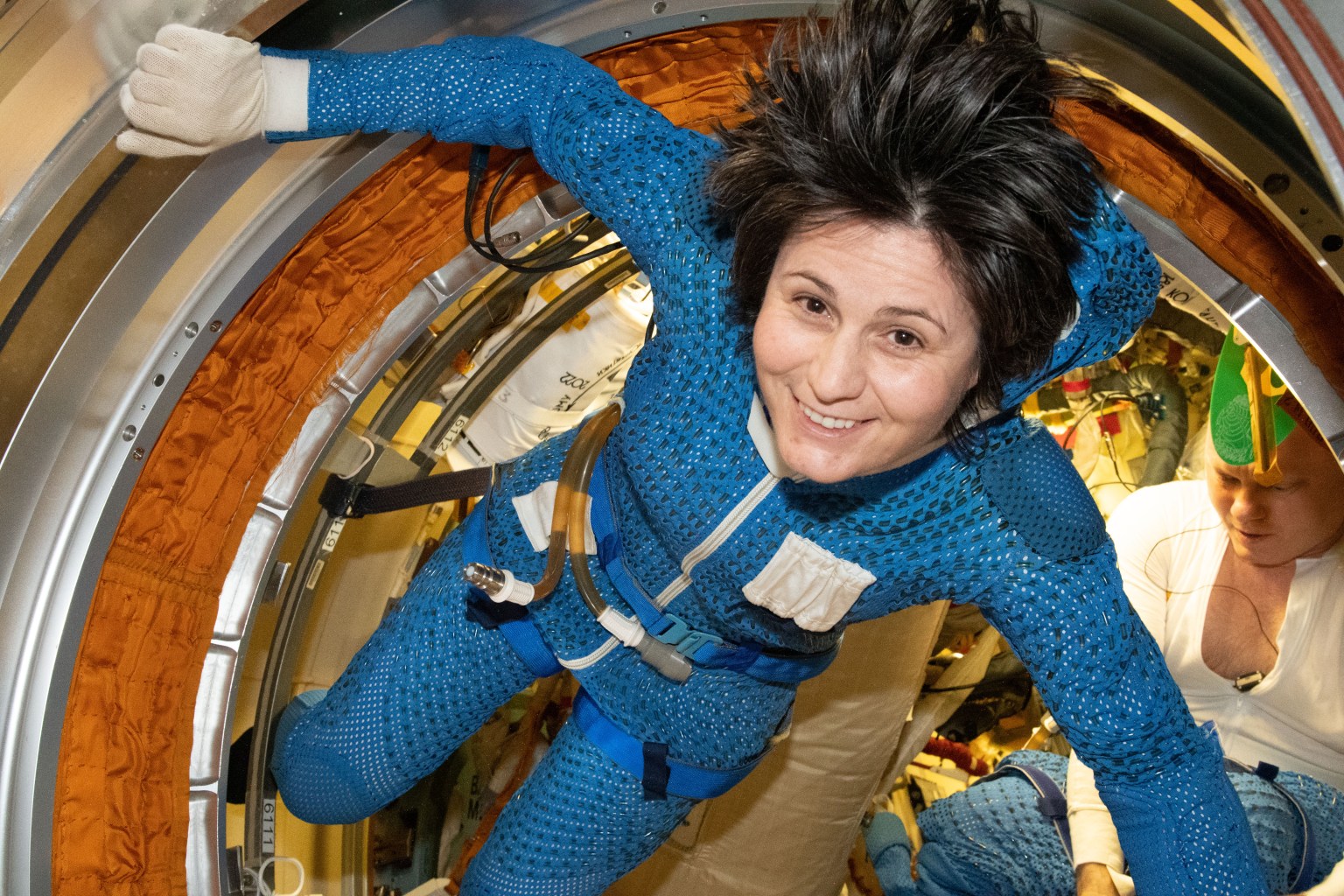
Space Portal
NASA's In-Space Production Applications (InSPA)
Continuing to open frontiers of commercial space activities to benefit people on Earth
NASA has invested over $60M in more than twenty In Space Production Applications to U.S. entities seeking to demonstrate the production of advanced materials and products on the International Space Station. These InSPA awards help the selected companies raise the technological readiness level of their products and move them to market, propelling U.S. industry toward the development of a sustainable, scalable, and profitable non-NASA demand for services and products manufactured in the microgravity environment of low Earth orbit for use on Earth. Activities include development of new semiconductors, materials and devices for public use, and new approaches for treating some of the world’s most challenging diseases and afflictions such as cancer, organ replacement and age related blindness. The Ames Space Portal Office was instrumental in establishing the InSPA strategy and portfolio and continues to provide important support and expertise for this exciting and promising development area.
Learn More about InSPA about NASA's In-Space Production Applications (InSPA)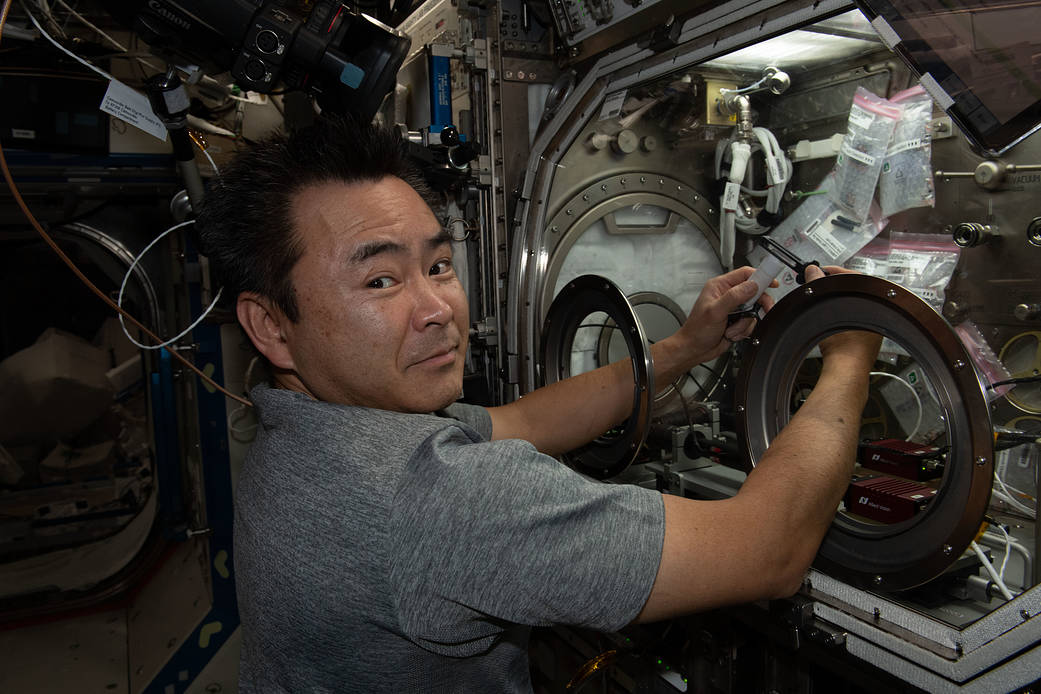
Matthew Buffington
Letter from the Director
Every year around this time, we love to highlight our numerous new partnerships, licensing and small business transactions, and cash value we generate for NASA and the American taxpayers. However, it is important to keep in mind that each of these partnership agreements represent some amazing and groundbreaking technology and science. This year especially, NASA has been able to do so much more with our partners to build the new space economy.In the coming year, I’m happy to announce that we will be launching a new platform to share our stories with our partners we are calling NASA’s Space Economy Lecture Series. We will start in early 2024 with several talks about “How to work with NASA”. More information will come after the new year, but don’t hesitate to reach out if you want to be on our distribution list for updates. Here’s to another great year in 2024!
Learn More about Strategic Partnerships at Ames Research Center about Letter from the Director